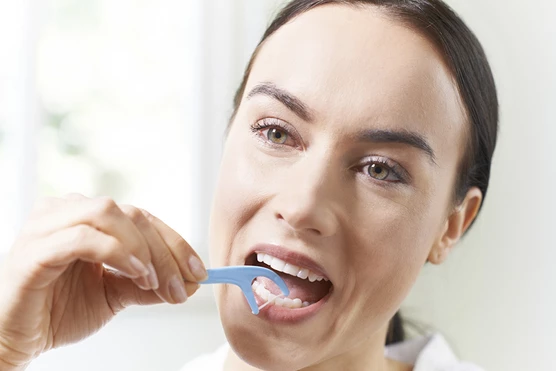Minimal Intervention Dental Care: What’s it About? {Part I}

Let me say from the outset that I’m not the ‘be all and end all’ of minimal intervention dentistry. On the flip-side, I’ve been consciously practising what I think is minimal intervention dentistry (or my own brand of) for the last 30 or so years. Let me share some insights.
The most apparent aspect of minimal intervention dental care is that there is a conscious effort NOT to CUT-AWAY TEETH (unnecessarily). YES, this is true.
If I had to put this concept into a nutshell, I would suggest that for any restoration we do on a tooth, the remaining tooth structure forms the foundation for the restoration. Everyone wants strong foundations – whether it be dentistry or building a new house. So I figure that the more of the foundation you cut away, the more you weaken the foundation. In this context, minimal intervention dental care makes sense – remove decayed/weakened tooth structure and repair/restore the balance of the tooth with modern adhesive composite resin technology.
So, the essence of this philosophy is REPAIR, which leads me to the next feature of this treatment philosophy:
Repairability – We live in a largely throw-away world. Isn’t it nice that there are still aspects (especially where we are dealing with valuable, non-regenerative human tissues) where conservatism and repair are often, still, the best option? If you’ve repaired it once – let’s see (if it’s reasonable) to repair it again, and again.
Restorative Life Cycles – We live in a world where very often, the lifespan of a device/treatment can be quantified. If the treatment utilises modern adhesive technology effectively, this life cycle may be 10, 15, maybe even 20 years depending on personal habits and circumstances.
Let’s say the first significant restoration someone receives is at the age of 25 years old. If we can get three lifecycles of 15 years out of the tooth (3 conservative reviews/repairs of the restoration) – the patient is now close to 70 years old.
Yes, I understand that the initial presentation of the tooth, home care, diet and general health all play a role in the longevity of dental restorations. Just ensure that every speck of sound tooth structure is conserved at each step of the restorative life cycle of the tooth, each repair is conducted diligently, and the patient is educated about home care, diet, and dental health. With these aspects managed well, we’re in with a good chance! I’ve chosen 70 years based on “3 score and 10” concept.
A critical aspect of restorative lifecycles – to deliver teeth for life – is that there are a minimum number of “touches” of the tooth in question. Unfortunately, this is not in keeping with many modern marketing concepts (yes, marketing – nothing to do with the technical aspects of dental care). My experience has been that the majority of patients, who experience durable stability and management of their dental health, are happy to come back and have their regular checks and cleans.
Assuming they are stable and not having problems, the majority of these patients are even more enthusiastic about their regular yearly check-up, simply because they want the “winning streak” to go on as long as possible. And their lack of need for dental treatment means we’ve got more time in our appointment book for new patients who have problems.
In Part 2 of this series, I’ll talk about fundamentals, upgradability and the role of education and how these concepts relate to keeping your teeth for life.
This article was originally published here at intouch Magazine.
DR ALEX HUSZTI BelleDental
Alex has had a career focused on low-biologic cost reconstructive cosmetic dental care – common sense teeth for life. Alex services clients in the Hunter Valley, Newcastle, Lake Macquarie and Maitland areas.




